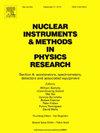Design and performance of a universal SiPM readout system for X- and gamma-ray missions
IF 1.5
3区 物理与天体物理
Q3 INSTRUMENTS & INSTRUMENTATION
Nuclear Instruments & Methods in Physics Research Section A-accelerators Spectrometers Detectors and Associated Equipment
Pub Date : 2025-06-26
DOI:10.1016/j.nima.2025.170782
引用次数: 0
Abstract
The advent of both multi-messenger and time-domain astrophysics over the last decade has seen a large interest in the development of small-scale, cheap, and robust gamma-ray detectors. This has been further encouraged by the availability of CubeSat platforms. Of particular interest are detectors capable of producing spectral and localization measurements of X and gamma-ray transients to allow for accurate follow-up measurements at different wavelengths. A vast number of the instruments developed for such purposes in the last years use a combination of scintillators and Silicon Photomultipliers (SiPMs) for photon detection. Here, we present the design, performance, and space qualification of a readout system capable of reading out 64 SiPM channels. This low-power and low-cost system was originally designed for the POLAR-2 mission, a large scale gamma-ray polarimeter. However, its flexible design makes it equally suitable for use on various CubeSat missions. The system was found to perform well when reading out both plastic and high Z scintillators using a total of 1.8 W. The space qualified design furthermore relies on commercial off-the-shelf components, thereby also removing most international export issues. In this paper, we will present the overall design, the performance of the electronics, its performance when reading out various scintillators and the successful space-qualification of this design.
用于X射线和伽马射线任务的通用SiPM读出系统的设计和性能
在过去的十年里,随着多信使和时域天体物理学的出现,人们对开发小型、廉价和强大的伽马射线探测器产生了浓厚的兴趣。立方体卫星平台的可用性进一步鼓励了这一点。特别令人感兴趣的是能够产生X和伽马射线瞬态光谱和定位测量的探测器,以便在不同波长进行准确的后续测量。在过去的几年里,为这种目的而开发的大量仪器使用闪烁体和硅光电倍增管(SiPMs)的组合来进行光子探测。在这里,我们介绍了一个能够读出64个SiPM通道的读出系统的设计、性能和空间鉴定。这种低功耗和低成本的系统最初是为POLAR-2任务设计的,这是一种大型伽马射线偏振计。然而,其灵活的设计使其同样适用于各种立方体卫星任务。该系统在读出塑料和高Z闪烁体时都表现良好,总共使用1.8 W。空间合格的设计进一步依赖于商业现成的组件,从而也消除了大多数国际出口问题。在本文中,我们将介绍总体设计,电子性能,读取各种闪烁体时的性能以及该设计的成功空间鉴定。
本文章由计算机程序翻译,如有差异,请以英文原文为准。
求助全文
约1分钟内获得全文
求助全文
来源期刊
CiteScore
3.20
自引率
21.40%
发文量
787
审稿时长
1 months
期刊介绍:
Section A of Nuclear Instruments and Methods in Physics Research publishes papers on design, manufacturing and performance of scientific instruments with an emphasis on large scale facilities. This includes the development of particle accelerators, ion sources, beam transport systems and target arrangements as well as the use of secondary phenomena such as synchrotron radiation and free electron lasers. It also includes all types of instrumentation for the detection and spectrometry of radiations from high energy processes and nuclear decays, as well as instrumentation for experiments at nuclear reactors. Specialized electronics for nuclear and other types of spectrometry as well as computerization of measurements and control systems in this area also find their place in the A section.
Theoretical as well as experimental papers are accepted.

 求助内容:
求助内容: 应助结果提醒方式:
应助结果提醒方式:


